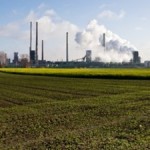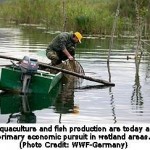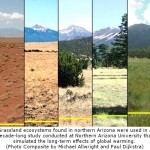 A major new Stockholm Environment Institute (SEI) report released on June 14 shows achieving UN energy goals within a 2°C pathway will require a massive scale-up of low-carbon technologies, driven by a shared development agenda and effective policies to guide public- and private-sector investment. World leaders can lay the groundwork at Rio+20.
A major new Stockholm Environment Institute (SEI) report released on June 14 shows achieving UN energy goals within a 2°C pathway will require a massive scale-up of low-carbon technologies, driven by a shared development agenda and effective policies to guide public- and private-sector investment. World leaders can lay the groundwork at Rio+20.
The report, “Energy for a Shared Development Agenda”, combines a global assessment of energy scenarios up to 2050, case studies of energy access and low-carbon efforts around the world, and a review of the technological shifts, investments, policies and governance structures needed to bring energy to all.
The report explores two alternate scenarios: basic energy access, to meet household needs for lighting, heat and cooking, and shared development agenda (SDA), which examines the implications for energy systems if all nations achieve per capita annual incomes of at least $ 10,000 USD (at 2005 purchasing power parity rates).
“Sustainable energy is not a question of North versus South. Enhancing our energy systems is a truly shared development agenda that goes to the core of our social and economic development aspirations. Sustainable energy needs to be centrally placed in the Rio deliberations,” says Måns Nilsson, SEI Deputy Director and lead author of the report.
Developing nations are already expanding energy access on their own, and the report shows that if current trends continue, global energy demand would rise from 365 exajoules (EJ) in 2010 to 775 EJ by 2050, with South Asia as the biggest consumer. Global CO2 emissions would rise to 64% above 1990 levels by 2020 and to 152% above 1990 levels by 2050, making it near-certain that temperatures will increase by more than 2°C.
“A focus on sustainable energy goals and commitments could also help to break the gridlock in the global climate negotiations”, continues Dr. Nilsson. “If we don’t pursue a shared development agenda, countries will continue on a development path based on fossil-fuels.”
Under the report’s SDA scenario, energy demands in the rich world will need to decline to allow room for more equitable global growth. Energy demand rises sharply across much of Africa, and to a lesser extent in South Asia. Yet global energy demand is only 33.5 EJ (11%) higher in 2050 than in the basic energy scenario, partly due to sharper reductions in energy use in the U.S., Canada and Western Europe. Carbon emissions are virtually the same in the basic energy access and the shared development scenarios.
The report reveals the scale of the necessary transformation. For example, in terms of renewables, globally as much as 8,900 GW of wind energy would be required by 2050, which would require building on average 248 GW of capacity per year between 2015 and 2050 – 25 times the recent global build rate of about 10 GW per year.
The report highlights incremental changes in energy supply and demand will not be enough to meet these objectives: to do so requires strong early action towards a massive transformation of socio-technical systems and rapid turnovers of infrastructure and technologies on both the supply and demand side.
On governance, the report argues that energy objectives and targets need a stronger home within the UN system, as part of the Sustainable Development Goals (SDGs) now discussed in Rio+20.
Key governance measures identified in the report include: a massive scale up of both public and private investments in renewable power capacity, basic energy access, and in energy efficiency; cuts to fossil fuel subsidies; and much greater public investment in R&D for renewables and efficiency to bring down costs of technology and improve implementation.
“Effective assessment frameworks, as well as monitoring and evaluation systems and mechanisms for transparency and accountability, are needed to ensure that strategies are coherent with overall development goals,” says Åsa Persson, SEI Research Fellow and lead author of the report’s governance analysis.
SEI assembled a partnership of leading international research institutions and think tanks to produce the report: the African Climate Policy Centre (ACPC), the Brazilian Foundation for Sustainable Development (FBDS), the Federal University of Rio de Janeiro (COPPE), the International Institute for Applied Systems Analysis (IIASA), the Netherlands Environmental Assessment Agency (PBL), The Energy and Resources Institute (TERI) and the World Resources Institute (WRI).
The scenarios in the report were produced by Charlie Heaps, Director of SEI’s U.S. Centre, using the LEAP (Long Range Energy Alternatives Planning) software he developed. The LEAP system has been used by governments, academics, NGOs, companies and energy utilities in more than 190 countries for energy policy analysis and climate change mitigation assessment.
“This is one of the first global energy assessments to be entirely open-source,” says Heaps. “We hope that others will build on our work to continue to explore these important issues.”
The LEAP scenarios draw on the results and draft report of the Global Energy Assessment (GEA) coordinated by the International Institute for Applied Systems Analysis (IIASA).
Måns Nilsson, lead author of ‘Energy for a Shared Development Agenda’, will present and discuss the report at Rio+20 at a side event.
Source: SEI.














